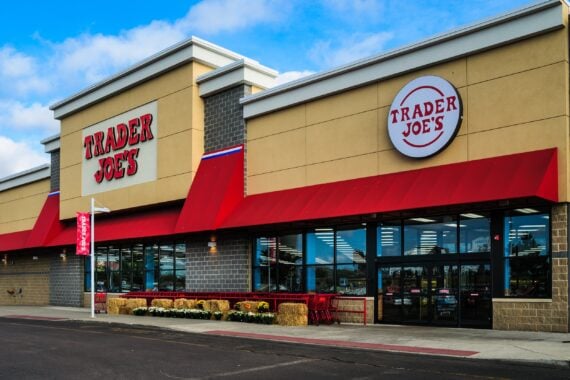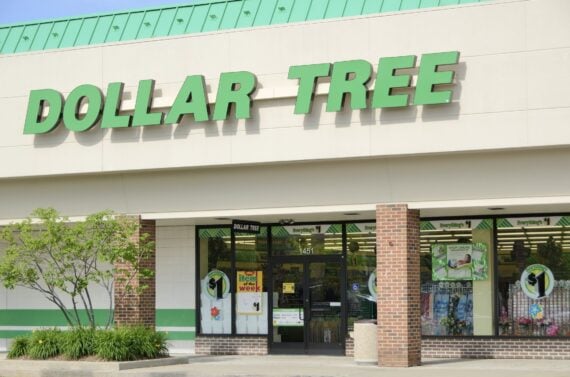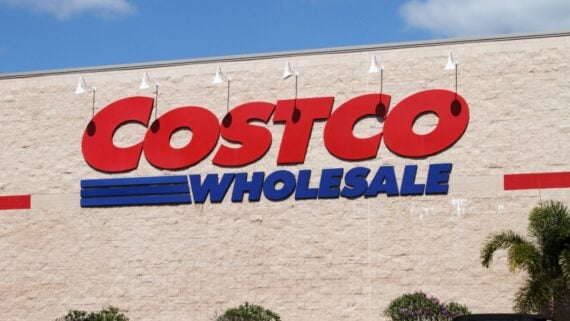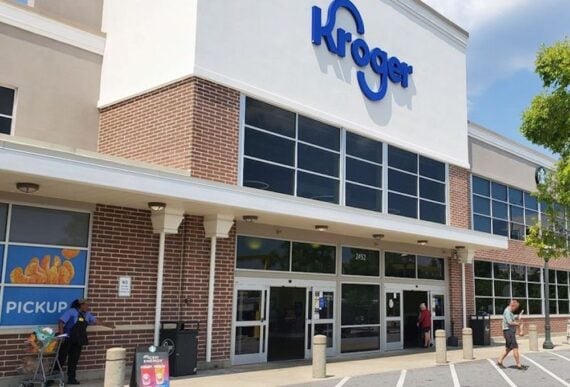Trader Joe’s is different from other national grocery chains. At least, that’s the perception they cultivate with their almost exclusively store-branded inventory, self-styled nautical decor, and personable staff presence. For anyone used to the more impersonalized supermarket experience, the employees’ friendliness can risk coming across as inauthentic. We looked into the store policies and spoke with one employee to find out exactly how Trader Joe’s manages to keep its staff — or “crew members” — seemingly as happy as its shoppers.
Related: Costco, Trader Joe’s, Aldi: How Do They Stay So Cheap?
The Hiring Process

This involves at least a three-step interview process with offbeat questions like, “What’s your favorite color?” or “Do you have a sense of adventure?” to gauge jobseekers’ personality. Taking initiative and demonstrating an interest in the company never hurts either.
“I feel like they really look for a person who has their own uniqueness, but is still a good people person,” says an employee of a Seattle Trader Joe’s, who asked to remain anonymous. “They don’t hire someone who’s just there for a paycheck. You don’t have to be the most outgoing person, but able to give that personable, insightful customer service. If you prove to them in the interview process you have that type of energy, you’re pretty much set.”
The welcoming smiles and cheerful atmosphere have not been universal across the chain, however, with some workers citing unjust reprimands and demeaning treatment. More recently, other workers have suggested that the chain was leveraging anxiety about the pandemic to hammer home an anti-union message as efforts to organize emerged early in the public health crisis, when its stores, like others, struggled with the demands of the new retail environment.
Related: The 27 Best Things to Buy at Trader Joe’s
The Training
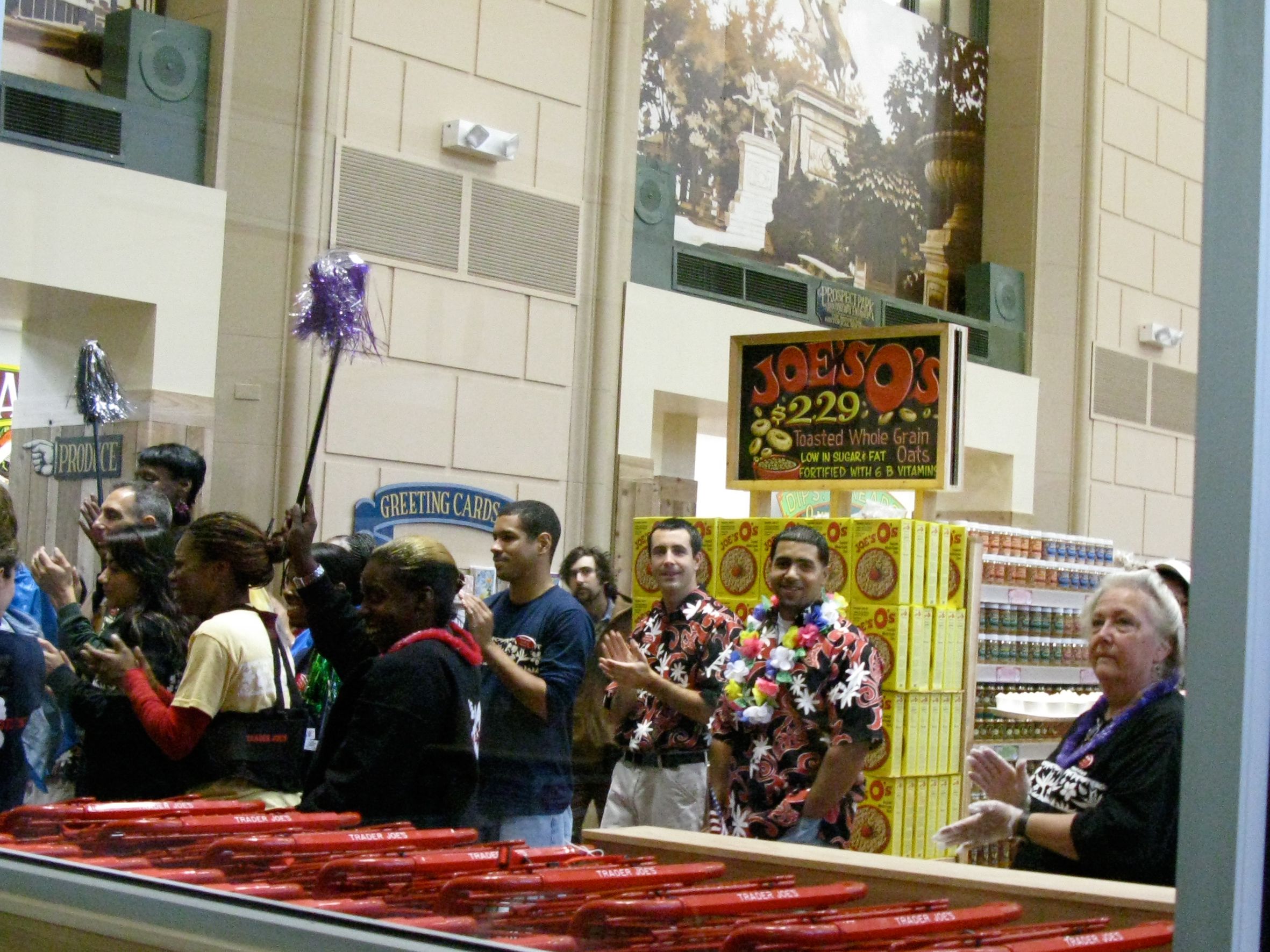
Store managers are expected to go even further by attending TJ University, which runs two-day classes focused on leadership and team building skills that can apply in running the store and beyond.
Even beyond their initial hiring or promotion, employees still stay informed about Trader Joe’s latest offerings. Before (and hopefully after) the current pandemic, stores held regular tasting panels for crew members to sample new food and wine products before they reached the shelves, all the better to answer customers’ questions and advise their shopping.
“They don’t want us to recommend new products just for the sake of it,” says the Seattle-area employee. “They want us to actually try it, and if we like it, we can say that confidently, but if we don’t like it, they want us to be honest.”
Related: 12 Things You Should Skip at Trader Joe’s
The Limited Inventory

If Trader Joe’s were as big as most supermarkets, employees would never be able to provide the same level of knowledgeable service. Employee tasting panels wouldn’t even be feasible at, say, a Safeway, because they carry too high a volume of unique products — about 50,000 compared to Trader Joe’s 4,000 — for any one person to be familiar with them all. By specializing and carrying roughly a tenth of the inventory, Trader Joe’s keeps their store selection manageable for both customers and employees to navigate.
Related: 15 Best House Wines From Costco, Aldi, and Trader Joe’s
The Overstaffing

“If a customer wants something, they make it so you can and should be there for them,” says one Seattle-area employee, who reports his store employs nearly 100 workers in total.
Related: Trader Joe’s 25 Best Buys for Packing Your Freezer
The Culture

“We want to set the tone that we’re not just a grocery store. We want to give customers an experience you can’t get somewhere else,” says the Seattle Trader Joe’s employee. Crucially, their philosophy manages to prioritize this experience without sacrificing employees’ sense of personal satisfaction or individuality. “They don’t want us to be that cookie-cutter type store or company that’s lying to try and make money.”
Another, more literal facet of the Trader Joe’s culture comes from the handmade custom signage labeling products throughout all of their stores. Each location employs its own art team devoted primarily to giving the space its own unique visual personality as well.
For more great shopping guides and grocery tips, please sign up for our free newsletters.
Trending on Cheapism
The Compensation

In Seattle, which has one of the nation’s highest minimum wages at $15.75, new employees still start out making roughly a dollar more per hour. What’s more, company policy gives them the chance for raises twice a year, which averages out to a 7% pay increase annually. No wonder 20% of employees have worked there for more than a decade.
Related: 21 of the Most Expensive Products at Trader Joe’s
The Benefits

They also offer a retirement plan, which includes an automatic 10% contribution from the company for any employee who worked 700 hours or more the previous year. It’s not just monetary benefits they provide, however, but social ones as well. “If the store’s doing really good some week, they would get us pizza or catering from local businesses to feed us,” relates the Seattle-area employee. “Plus, every year, we have a store party.”
Related: 40 Low-Carb Snacks from Trader Joe’s You’ll Actually Enjoy
The Community

All this financial support and social engagement can add up to a workplace that feels truly special, and not just because Trader Joe’s was named the nation’s best employer last year by Forbes. “I can truly say I love my coworkers,” explains the Trader Joe’s employee interviewed for this article. “I really feel a sense of family. … I never had that sense of community [at a job] before.”
